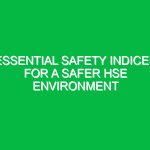Introduction to Wood Dust Management
Hello team! Today’s Toolbox Talk focuses on a crucial aspect of our work Environment: Wood Dust. As you know, working with wood is a significant part of our operations, but it also brings specific health and Safety challenges. Understanding how to manage Wood Dust effectively is essential to ensuring not only our Safety but also compliance with health Regulations. Let’s dive into some essential safety tips for managing Wood Dust in our workplace.
What is Wood Dust?
Wood Dust is composed of fine particles that are created when wood is cut, sanded, or machined. This dust can come from various types of wood, including hardwoods and softwoods, and can pose health risks if not managed properly. The main components of Wood Dust include cellulose, lignin, and hemicellulose, which can cause respiratory issues and skin irritation. It’s important to understand that different types of wood can produce different dust characteristics, some of which may be more hazardous than others.
Health Risks Associated with Wood Dust
Exposure to Wood Dust can lead to a range of health issues, some of which can be serious. Here are some common risks:
- Respiratory Issues: Inhalation of wood dust can lead to conditions such as asthma and chronic obstructive pulmonary disease (COPD).
- Skin Irritation: Contact with wood dust may cause dermatitis or other skin irritations.
- Allergic Reactions: Some individuals may develop allergic reactions to specific types of wood.
- Cancer Risks: Certain types of wood dust, especially hardwoods, have been classified as carcinogenic.
Why is Managing Wood Dust Important?
Effective management of Wood Dust is critical for several reasons:
- Health Protection: Keeping ourselves and our coworkers safe from potential health risks.
- Regulatory Compliance: Adhering to OSHA Standards and other regulations related to dust exposure.
- Improved Work Environment: A cleaner workspace is not only safer but also more pleasant and productive.
Best Practices for Managing Wood Dust
Now, let’s discuss some practical steps you can take to effectively manage Wood Dust in our workplace:
1. Use Proper Ventilation
Ensure that your work area is well-ventilated. This can help dilute and disperse Wood Dust particles in the air. Use exhaust fans and open windows when possible. Remember that proper airflow can significantly reduce dust accumulation.
2. Employ Dust Collection Systems
Utilize dust collection systems that can capture and filter out Wood Dust at the source. This includes using vacuums with HEPA filters and installing fixed dust collection units near cutting and sanding stations.
3. Wear Personal Protective Equipment (PPE)
Always wear appropriate PPE when working with wood. This includes:
- Respirators: Use N95 masks or higher to protect against inhaling dust particles.
- Safety Glasses: Protect your eyes from dust and debris.
- Gloves: Wear gloves to prevent skin contact with dust and potential allergens.
4. Implement Regular Cleaning Routines
Establish a routine for cleaning areas where Wood Dust accumulates. Use a vacuum with a HEPA filter instead of sweeping, which can stir up dust particles. Schedule regular clean-up sessions to keep the environment safe.
5. Train Employees on Dust Safety
Training is vital. Ensure all employees understand the risks associated with Wood Dust and the importance of following safety Procedures. Conduct regular Training sessions and refreshers to keep safety top of mind.
Real-Life Scenario
Let’s consider a hypothetical scenario: Imagine a colleague working on a sanding project without adequate ventilation. As the dust accumulates, they start experiencing coughing and irritation in their eyes. If the situation escalates, it could lead to serious health issues. By following the practices we discussed — ensuring good ventilation, using PPE, and employing dust collection systems — this situation could have been avoided. Safety is everyone’s responsibility!
Regulations and Standards
It’s essential to be aware of the regulations surrounding Wood Dust. The Occupational Safety and Health Administration (osha) has established permissible exposure limits (PEL) for wood dust. Compliance with these regulations not only protects our health but also helps the company avoid legal penalties. Regular monitoring and risk assessments should be conducted to ensure we remain compliant.
Engaging the Team
Before we conclude our Toolbox Talk, I’d like to open the floor for discussion. What are some challenges you face when managing Wood Dust? Have you noticed any areas in our workplace that may need improvement? Your feedback is crucial in maintaining a safe working environment.
Conclusion
In summary, managing Wood Dust is vital for our health and safety. By utilizing proper ventilation, dust collection systems, PPE, regular cleaning, and ongoing training, we can significantly reduce the risks associated with Wood Dust. Remember, compliance with regulations is not just a legal requirement; it’s a commitment to our safety and well-being.
Thank you all for your attention today. Let’s keep our workplace safe and healthy by putting these practices into action!


